FEATURE
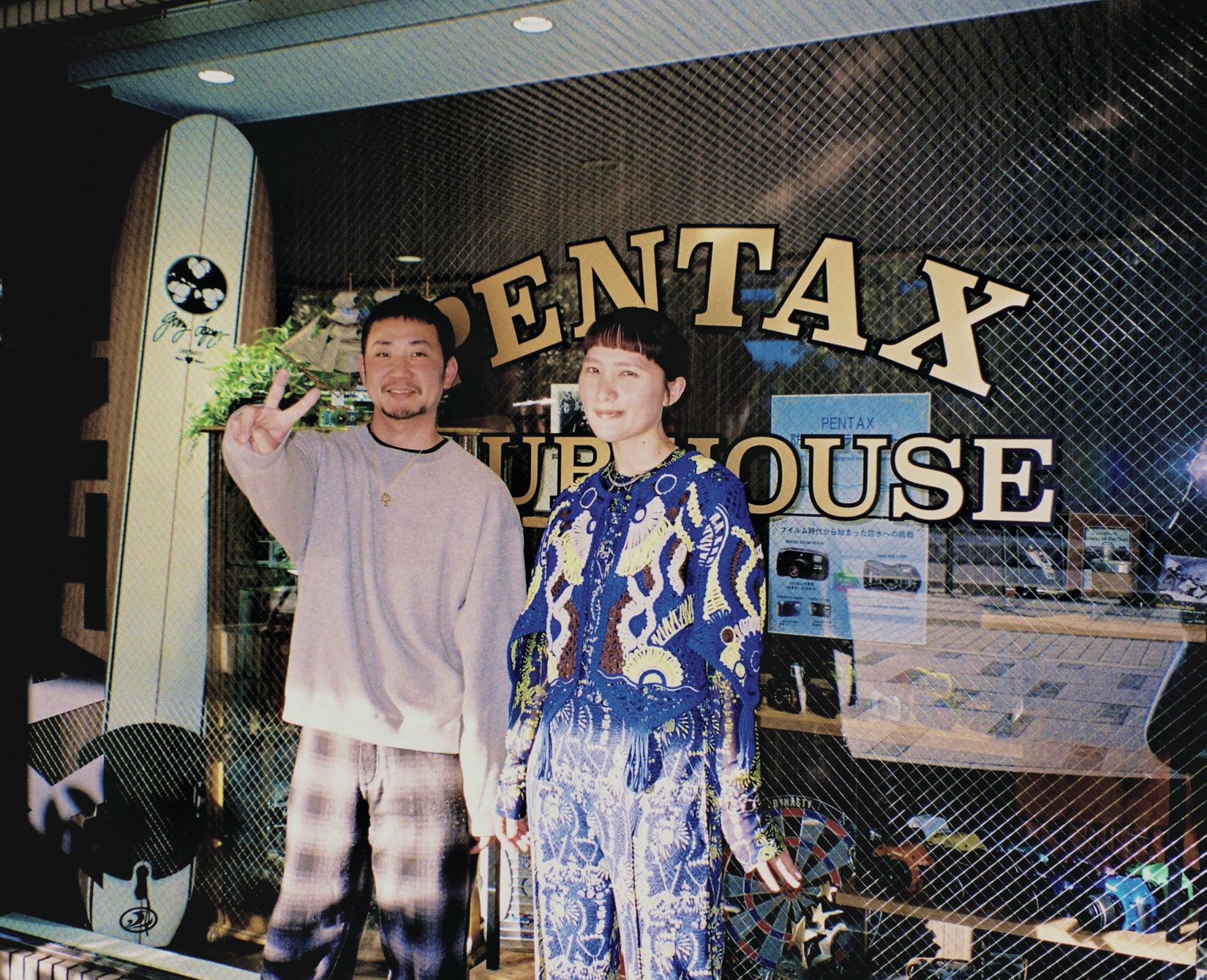
Short series PENTAX Film Project Club House Diary vol.8 Guest: AAAMYYY×TAKAO IWASAWA
MAR. 18 2024, 12:00PM
Photographs and text / Melanie Tada
Styling /(AAAMYYY)Kan Fuchigami
Hair&Make-up /(AAAMYYY)Hitomi Kanto
BARFOUT!: Mr. Iwasawa, you started photography with a film camera, didn’t you?
Iwasawa: I like monochrome, and I used Ricoh GR and Kyocera Samurai.
AAAMYYY: I use Samurai too!
Iwasawa: I started using it when I was a college student, and we could buy a used Samurai for about 500 yen at the time. Putting stickers and drawing pictures on cameras was popular in the photo art club I belonged to, and I had about 10 cameras that I decorated myself. Since it’s a half-frame camera, I could take 72 shots, and holding it vertically was also refreshing. Not only I love taking photos, but I also love cameras themselves, and I think I’ve tried about 100 different cameras in total.
AAAMYYY: Every time we met, he’d say something like, “I bought another camera!”
Iwasawa: When I first started working at Barfout! after my debut, I was like, “I bought a new camera, so let me take some pictures” (laughs). I had a strong impression of monochrome photographs as color copies of black and white, but at the photo art club I was surprised at how beautiful the neutral gray tones could be (when I developed it) Once I realized that monochrome is not just two colors, I got hooked on it and was taking about 10 pictures a day.
Iikawa: Digital cameras have become mainstream, and of course they have their advantages, what do you find attractive about film cameras?
Iwasawa: It’s warmth. I give the photos I’ve taken as gifts to my friends, and I get the impression that they are more special when they are on film, and that everyone who receives them is also pleased in a different way. AAAMYYY We’ve known each other for about 5 years now, and even when I have to follow live performances for work, for me, it is a private shoot with members of the group who are my good friends, so if I want to capture the fun atmosphere the dressing room and backstage, I want to shoot on film.
AAAMYYY: Sometimes we play together, and sometimes we come to my house and take pictures. I had my pictures taken when I was nearing the end of my pregnancy, and then again when I visited a shrine with my child, and they were so beautiful that I put them in a picture frame to display them. These were very special pictures.
BARFOUT!: AAAMYYY, do you use a film camera on a daily basis?
AAAMYYY: I always carry it with me. I also take pictures with my smartphone, but now I have two Olympus μMJU cameras, one of which has a broken flash, so I use it to take photos in sunlight. I like taking pictures of people, including my own child, so I take a lot of pictures and give them to everyone.
Iwasawa: Negatives don’t crash so much, so it’s nice to have them as physical objects. Also, for some reason I end up taking too many pictures with my smartphone.
AAAMYYY: I can understand this. It’s easy and convenient to take pictures, but you’ll end up not really appreciating it.
Suzuki: Almost everyone has a smartphone, and given the convenience of taking photos easily, we would be happy if people would also want to own another film camera. However, like AAAMYYY’s μMJU, once it’s broken, it cannot be repaired. If it’s a fairly old camera, you can fix it with some effort, because it is the same machine as a mechanical clock. However, once automation has progressed to a certain level, complex things like electronic boards come into play. Once they are there, you can’t fix it. So, if the flash breaks, it can’t be fixed unless you find another and replace it, and since there are only a few left, the number will gradually decrease.
Iwasawa: I think it’s closer to a synthesizer.
AAAMYYY: I think it’s close. I am in charge of synthesizers at Tempalay, and when it comes to equipment from the 80s that was used by people like YMO, there are very few people who can repair it. Although I have managed to find a few craftsmen to maintain them, it is more expensive to repair them, so people around me are gradually giving them up.
Suzuki: It’s the same for records. There used to be many Japanese manufacturers, but they disappeared over time. But with the use of analog vinyl in clubs, and artists starting to release EP disks with their new releases, vinyl records are coming back again. Young users have revived the culture. A similar thing is happening now with film cameras, and we’re realizing the strength of the power that pushes them forward.
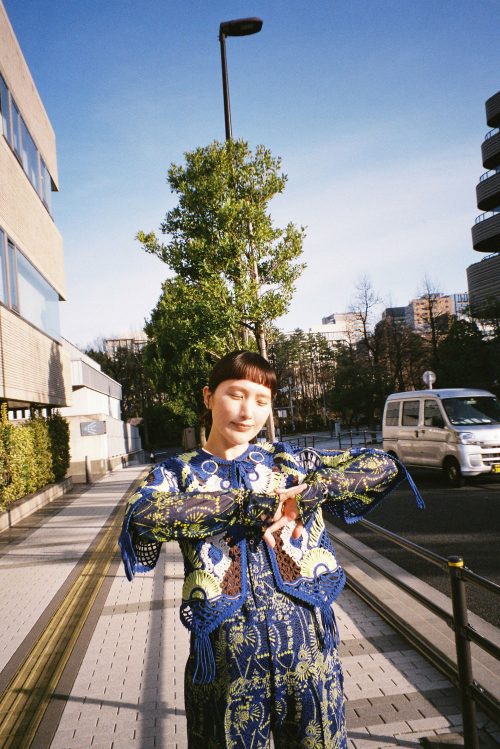
Iikawa: Since we are here today, I would like to ask both of you to try the prototype that we are now studying and give us your opinions. We asked many people, including young users and vendors, for their opinions, and there were many mechanisms that we’ve been struggling to put within the project. We wanted to make sure that even first-time users wouldn’t make mistakes, but we also wanted them to feel the fun of tinkering with it themselves, so we combined auto and manual modes.
AAAMYYY: The dial guide is easy to understand. The winding feels nice and the shutter sound is lovely.
Suzuki: That’s exactly what I wanted you to enjoy. The manual winding mechanism is based on a drawing of a Pentax SLR camera at the time, and that part is the only mechanical part. It would be easier to make it automatic, but I wanted to keep the same clicking feeling when turning it. I can’t explain it in detail at this time, but we are working on the details so that you can enjoy many other things. When I was in Taiwan and Europe on a business trip the other day, I took my first test shots with the study stage prototype. I was impressed by how much more beautiful the cityscapes and selfies of old men were than I had imagined.
Iwasawa: (Looking at the photo) You can see the edges of the film. I think more and more works of art will take advantage of the techniques and strengths of this camera.
AAAMYYY: It will make for some nice photos. A friend of mine was visiting the U.S. about six months ago, and he showed me the photos he had taken on film, and they were really wonderful. I take pictures of scenery that suddenly catches my eye or light that I find pleasing… This camera is so light and thin that I want to take it with me on my trips abroad and take a variety of pictures. I had a friend who was hooked on hand-wound film cameras, but didn’t continue because they were too heavy, so I would recommend this camera when it becomes available.
BARFOUT!: What about you, Mr. Iwasawa, how would you use it?
Iwasawa: I guess I would experiment first. I’d like to open the back cover and intentionally expose the camera to light, and try out other photographic techniques to see how much front blur I can get. I am currently working on a few works, so as I touched it I was thinking about how they would fit in with those concepts.
Iikawa: The thoughts of the photographer, the people being photographed, the people making the camera, and the people making the film are all connected and if you look at social media now, you can see that all of this is taking shape as a single work of art. A lot of people are getting more and more interested, people are asking “What camera did you use to take the picture?” I would be very happy if this camera could serve as a bridge for that.
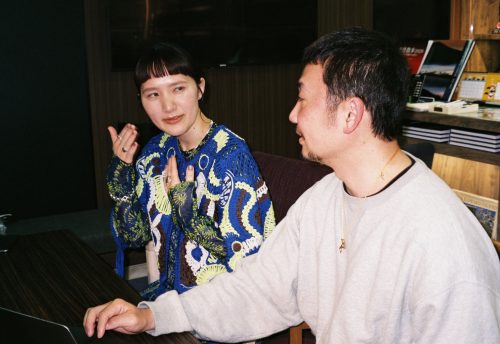
PHOTOGRAPHS BY AAAMYYY&TAKAO IWASAWA
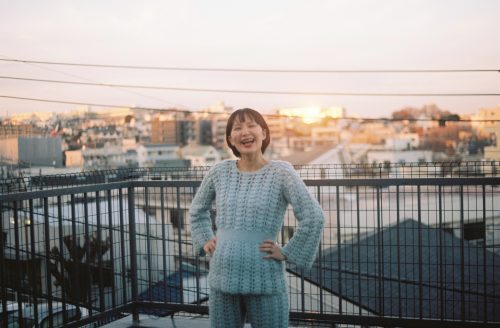
(1)
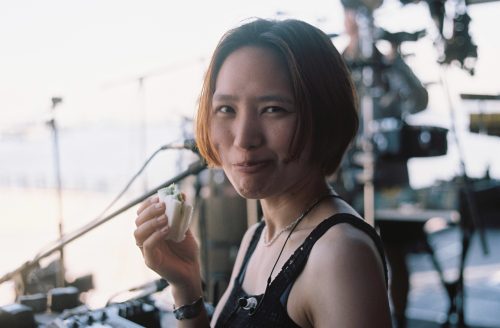
(2)

(3)
(1) Maternity photo presented to AAAMYYY. I think we ate ramen together and took pictures on the rooftop when the light was beautiful (Iwasawa).
(2) A photo taken during live rehearsal. She let me take pictures of them without decorations, anytime, anywhere (Iwasawa).
(3) On a cave cruise in Izu. The sun was shining only in the middle and I was able to take mysterious pictures of the rock surface and the deep blue of the sea (AAAMYYY).
INFORMATION OF PENTAX
<PENTAX> Introductory video “Film Camera Project” and articles published in Barfout! are now available on the website.
www.ricoh-imaging.co.jp/english/pentax/filmproject
【WEB SITE】
ricoh-imaging.co.jp
【Instagram】
@pentax.jp
【X】
@ricohimaging_jp
INFORMATION OF AAAMYYY
The song “Savior” produced by MONJOE is now available. Tempalay’s 5th full-length album “((ika))”, their first in 3 years, will be released on May 1. In addition, the Tempalay Tour 2024 “((ika))” will be held in 9 cities across the country, starting with a performance at Zepp Osaka Bayside!
【WEB SITE】
aaamyyy.jp
【Instagram】
@amy0aaamyyy
【X】
@amy0aaamyyy
INFORMATION OF TAKAO IWASAWA
A photo exhibition is scheduled for April.
【WEB SITE】
www.thevoice.jp/takao-iwasawa
【Instagram】
@takaoiwasawa




